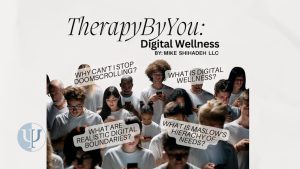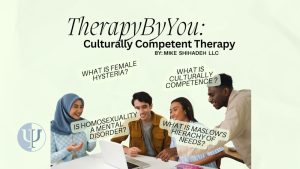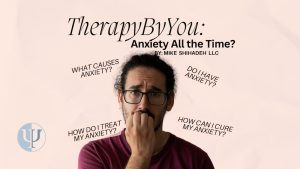Key Takeaways
- AI therapy tools can provide short-term symptom relief but cannot replace human therapists
- Research shows benefits for mild symptoms and as supplementary support
- Important limitations include lack of emotional attunement and ethical concerns
- Best used as a bridge to traditional therapy or for basic support

A GPT Therapist?
It sounds futuristic and a bit dystopian, however living a individualistic society can lead people to seeking connection. But it raises some real questions.
Like:
Can AI actually help with mental health?
Should you trust a chatbot with your emotions?
And how do these tools compare to talking with an actual human being?It’s not all hype but it’s definitely not all healing either.
We’ll walk you through what AI mental health tools really are (and what they’re not), what the science actually says about whether they work, and where they might help or hurt depending on what you need.
Because the truth is, while AI therapy tools have a lot of potential, they also have some big limitations. And if you’re navigating your mental health whether you’re on a therapy waitlist, burnt out from Google searches, or just wondering if there’s an easier way this I hope this is helpful.
Understanding AI Therapy Tools
You’ve seen the ads.
You’ve heard the promises.
Maybe you’ve even downloaded one out of curiosity an app that promises to “help you manage anxiety” or “talk you through a tough day.”
AI mental health tools are everywhere right now. From chatbots that text you back with affirmations, to apps claiming to monitor your mood and offer therapy like insight, the idea of a robot therapist has gone mainstream.
Need to Talk to a Real Therapist?
Common Myths About AI Therapy
- AI can fully understand human emotions
- Chatbots can replace human therapists
- AI therapy is always safe and regulated
- AI tools can handle complex mental health issues
The Reality
- AI can only recognize patterns, not truly understand emotions
- AI tools are supplements, not replacements
- Many AI mental health apps lack proper oversight
- AI works best for basic support and symptom tracking
What Are AI Mental Health Tools?
Let’s start with the basics. When people talk about “AI therapy,” what they’re usually referring to falls into three main buckets:
- AI Chatbots that simulate therapeutic conversations (like Woebot or Wysa)
- Therapy Companion Tools that support clinicians with tasks like note-taking or session summaries (like Eleos Health)
- Self-Help Apps that use algorithms to guide users through exercises or mental health check-ins
These tools can be useful,but, let’s be real. This isn’t therapy. And it definitely isn’t a therapist.
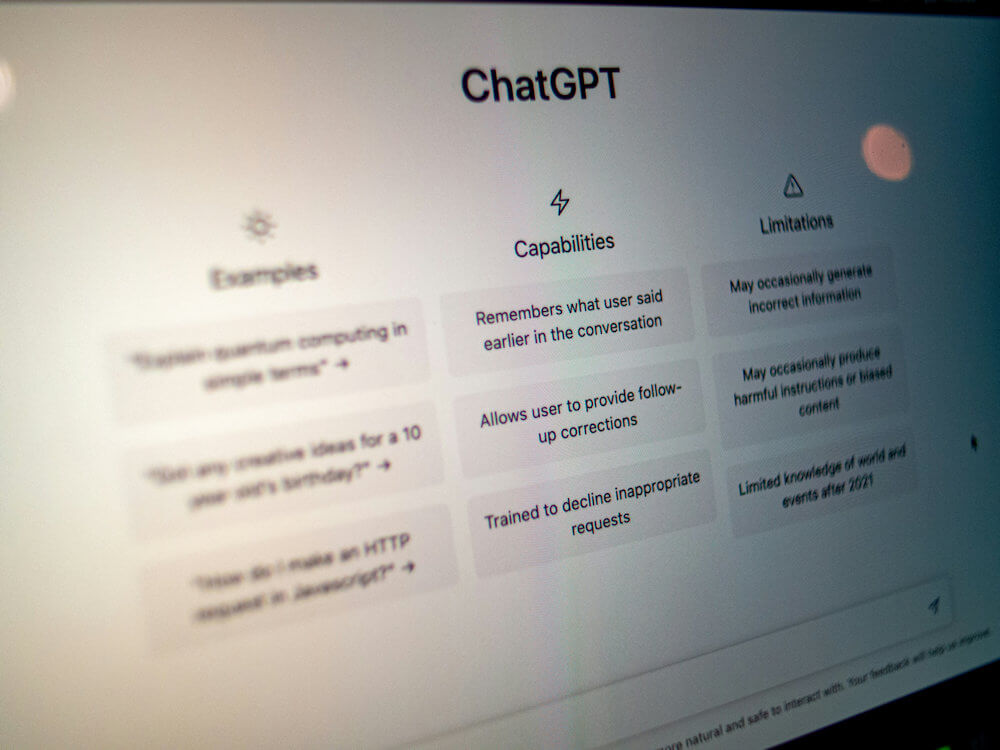
AI doesn’t understand you. It parses patterns in your language and offers scripted responses based on training data. It doesn’t recognize body language. It doesn’t catch the pause before your voice cracks. It can’t distinguish sarcasm from sincerity, or know when you’re on the edge of a deeper emotional collapse masked by a cheerful “I’m fine.”
As a clinician, this is where I start to worry. Not because I think AI has no place in mental health care,but, because we’re underestimating how nuanced human suffering really is. Therapy isn’t just about delivering the right technique. It’s about the relationship. It’s about context. It’s about the unspoken. None of that is captured in a chatbot that resets every time you open the app.
Let’s take exposure therapy. On paper, it’s a structured, evidence based technique. But any therapist who’s done it knows the session rarely goes according to plan. Panic attacks. Dissociation. Emotional regression. These things happen mid exposure—and they don’t always come with words. An AI therapist can’t see those signs. It doesn’t know when to slow down, hold space, or pivot with warmth and attunement. It might keep pushing, not realizing it’s already lost the client’s trust.
Even more troubling: AI tools often rely on a narrow set of modalities,usually, CBT, mindfulness, or ACT—applied in a very rigid way. But in the real world, most therapists are integrative. We blend techniques. We adapt. We improvise. No two clients are ever the same. A chatbot that delivers scripted CBT worksheets might look impressive in a controlled study—but it’s not therapy. It’s symptom management at best, and algorithmic guessing at worst.
And let’s not forget the ethical blind spots. Who’s responsible when an AI tool gives bad advice? Who ensures it doesn’t reinforce bias, or respond inappropriately to vulnerable users? Human therapists are accountable to licensing boards, peer review, and continuing education. AI is accountable to… the backend code?
Technology that CBT, mindfulness, or ACT therapy without human oversight can mislead people into thinking they’re receiving actual care. And while AI can be a helpful adjunct—it is not, and should not be, a replacement for the emotional labor and deep witnessing that real therapy offers.
Just because something is fast and available doesn’t mean it’s enough. It’s like replacing long division with a calculator and then forgetting how to problem solve altogether. You lose something essential when you offload healing to a machine.
Yes, AI tools can support access. They can reduce waitlist burden. They can help people track symptoms or build habits. But they can’t replicate human attunement. They can’t hold space for contradiction or grief or humor that’s layered with sadness. And they can’t look you in the eye and say, “I’m here with you.”
Let’s be honest about what they are—and what they’re not.
Ready to Talk to a Real Therapist?
Do AI Therapy Tools Actually Work?
So, let’s get to the heart of it:
Do these AI therapy tools actually work—or are they just mental health theater?
Here’s the honest answer:
They can help—especially in certain situations—but there are clear limits to what they can do.
What the Research Really Shows
The tool most often cited in studies is Woebot, a chatbot that uses scripted CBT techniques. In one study, college aged participants who used Woebot for two weeks showed a statistically significant reduction in symptoms of depression and anxiety compared to those in a control group (Fitzpatrick et al., 2017). That sounds great—and it is promising for short term symptom relief.
But there are caveats. Most studies are very short term—usually just a few weeks long—and rely on self reported surveys. That means we’re mostly measuring how people feel in the moment, not how their behavior or relationships change over time. We also don’t know much about long term effectiveness.
Another tool, Wysa, has gotten attention for being the first mental health chatbot to receive Breakthrough Device designation from the FDA. That’s a big deal. It means the tool showed outcomes that were functionally comparable to routine outpatient treatment for anxiety and depression.
But let’s not oversell what “comparable” means. Traditional outpatient therapy can sometimes underperform compared to more intensive or human guided methods like group therapy or structured self help (De Witte et al., 2021). So Wysa matches the low end of human care—not the best of it.
In other words: These tools are better than nothing, and in some cases genuinely helpful. But they are not delivering life changing results for complex mental health conditions. And they’re definitely not replacing therapists.
Where These Tools Actually Shine
- Filling gaps in access
If you’re on a therapy waitlist, live in a rural area, or just can’t afford regular sessions, these tools can offer structure and check ins when nothing else is available. - Reducing stigma
People who feel unsure about therapy might feel more comfortable “talking” to an app first, especially if they’re nervous about being judged. - Symptom journaling & reflection
AI bots are decent at helping users track moods or catch distorted thoughts, similar to a digital CBT worksheet. - Between session support
For people already in therapy, tools like Woebot or Eleos Health can help keep momentum going with check ins and skill practice.
Used this way, these tools act like support tools, not solutions. They’re helpful when human care is limited or unavailable—not a replacement for human connection, clinical attunement, or long term therapeutic growth.
Ready for Personalized Mental Health Support?
The Limits of AI Therapy
It’s tempting to think a chatbot might be “good enough.”
After all, it’s always available, it doesn’t judge, and it never forgets your password. But when it comes to real healing—when you’re grieving, unraveling trauma, or struggling to feel human again—AI hits a wall.
No Relationship, No Repair
The core of therapy isn’t just technique—it’s relationship. It’s a human in the room with you who can catch what you don’t say. Who notices when your voice shifts or your posture closes up. Who understands that sometimes silence means everything.
AI doesn’t have that. It can offer a pre-written phrase like, “That sounds hard,” but it doesn’t feel it. It can’t lean in. It doesn’t care about you—not because it’s cold, but because it doesn’t have a self to care with.
And in therapy, that kind of presence is everything.
See, therapists don’t stick to a single method—we integrate. We pull from CBT, DBT, ACT, mindfulness, somatic awareness, narrative frameworks—whatever the client needs. AI tools, however, are built to follow scripts. They apply protocols in rigid ways, without adjusting to context, culture, or emotional depth. They cannot read nuance.
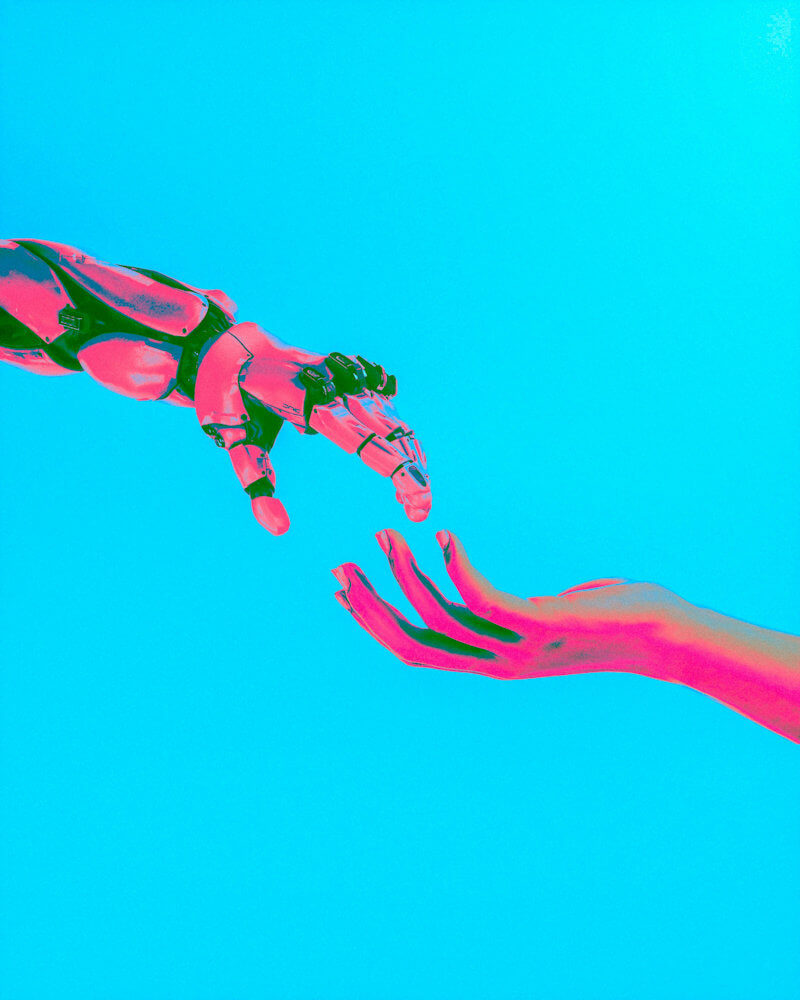
Ethical Hazards and Safety Gaps
Beyond clinical limitations, there’s the ethical elephant in the room:
Who’s responsible if the AI gets it wrong?
- What if a chatbot misses signs of suicidal thinking or misinterprets risk?
- We all have had that crossing thought of swerving our car… AI isn’t gonna understand that it doesn’t mean we want to die.
- What happens when the user is a teenager describing abuse—and the AI replies with a generic response?
- Or if the chatter doesn’t disclose their age?
- Who reviews its outputs? Who oversees its decision-making?
Unlike licensed clinicians, AI developers don’t report to state boards. There’s no formal accountability. The FDA has limited regulatory reach unless a tool claims to be a medical device. That leaves a lot of mental health apps—especially chatbots—in a regulatory gray zone.
And then there’s automation bias—the tendency to trust machine outputs, even when they’re wrong. In vulnerable moments, users might treat chatbot responses as valid clinical advice. That’s not just risky—it’s deceptive.
Simulated Support Is Still Simulated
Another problem? These bots don’t remember your story. Most start fresh every time you log in. That can feel frustrating, even dehumanizing. People who are already struggling with feelings of invisibility or abandonment might come away from these interactions feeling more alone than when they started.
AI reinforces “fix it” thinking—as if anxiety or grief can be solved with a listicle or thought reframe. It’s all cognitive; there’s no room for depth. No witness to your story. No space to say, “I don’t need advice. I just need someone to sit with me in this.”
Which is why, despite their growing popularity, even the best AI tools must be used with serious guardrails.
The Bottom Line
AI therapy tools are a technological innovation. But they’re not emotional companions. And they’re certainly not licensed clinicians.
They can help—but they can also harm.
And in a world where connection already feels scarce, we can’t afford to forget that healing isn’t just about information—it’s about being seen.
Final Thoughts: Should You Try an AI Therapist?
AI therapy tools are not evil. They’re not useless. But they’re also not magic.
They’re tools—some of them genuinely helpful, especially for people navigating waitlists, low access, or mild symptoms. They can offer comfort, structure, and skill-building in small doses.
But they are not therapy. They can’t offer the relational repair, emotional attunement, or deep understanding that humans bring to the healing process. They don’t hold your story. They don’t see you across time. They don’t know you.
And healing, especially when it comes to trauma, identity, grief, or relational pain—that kind of healing requires more than an algorithm. It requires presence.
So if you’re curious? Sure—try an AI tool. Use it as a starting point. Use it to bridge a gap. Just don’t mistake it for the whole bridge.
And when you’re ready for something more—when you’re ready to be seen, not just processed—know that real, human therapy is still here. And it always will be.
Frequently Asked Questions About AI Therapy
No. AI tools can offer structured support and short-term symptom relief, but they lack the relational depth, clinical judgment, and ethical responsibility that define real therapy. Most experts—including the American Psychological Association—agree that AI can be helpful as a supplement, not a replacement.
It depends. Some tools are well-researched and use secure data protocols. Others are less transparent. Always check whether the app has been reviewed, how your data is stored, and whether it's regulated (many are not). AI tools are not a substitute for crisis care.
Tools like Woebot and Wysa have been studied more than most. Woebot has shown short-term benefits in reducing depression and anxiety symptoms. Wysa received FDA Breakthrough Device designation for treating mild-to-moderate anxiety and depression. That said, many mental health apps have little or no clinical research behind them.
AI therapy typically refers to chatbots or self-guided tools that simulate therapeutic interactions. AI-augmented therapy refers to tools used by clinicians (like Eleos Health) that help track symptoms, summarize sessions, or support clinical decision-making without replacing the therapist.
Not likely. Human therapy relies on relational intelligence, cultural awareness, ethical presence, and emotional attunement—things AI still can't replicate. Technology may evolve, but for now (and for the foreseeable future), the therapist's chair belongs to a human.
Making Informed Decisions About AI Therapy
When considering AI therapy tools, it’s important to:
- Understand their limitations and potential risks
- Use them as supplements, not replacements for professional care
- Be aware of privacy and data security concerns
- Know when to seek human support
Ready for Real Support?
Works Cited
- Fitzpatrick, K. K., Darcy, A., & Vierhile, M. (2017). Delivering cognitive behavior therapy to young adults with symptoms of depression and anxiety using a fully automated conversational agent (Woebot). JMIR Mental Health, 4(2), e19.
- De Witte, N. A. J., et al. (2021). Effectiveness of routine outpatient psychotherapy compared with other treatment formats: A meta-analysis. Clinical Psychology Review, 89, 102083.
- U.S. Food and Drug Administration. (2022). FDA grants Breakthrough Device designation to Wysa AI tool for mental health.

